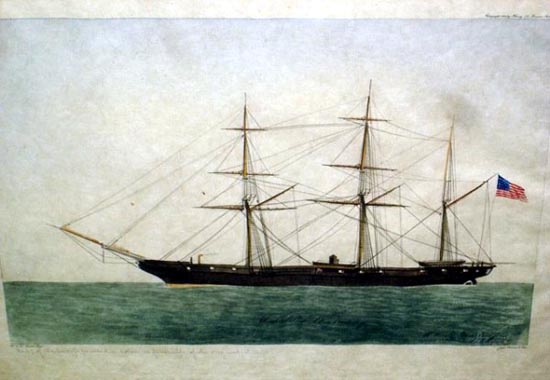
The United States Steam Sloop Wyoming
Since prior to the Civil War, the United States Navy has had ships named the USS Wyoming. The first,
depicted above, however, was not named after the State but, instead, after a valley and battle in Pennsylvania. Additionally,
there have been several civilian ships named Wyoming.
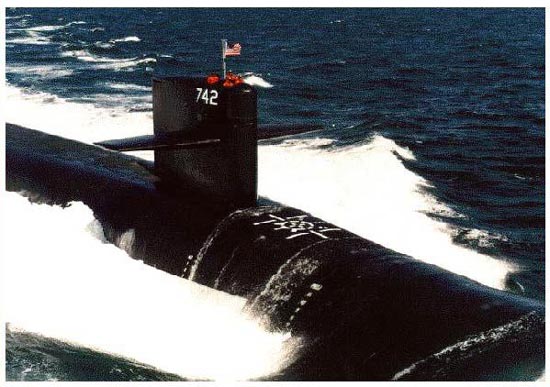
USS Wyoming, SSBN-742.
The present USS Wyoming is the fourth
ship (the present USS Wyoming is properly referred to as a boat, not a "ship", ships
are on top of the water, submarines are boats) in the
U.S. Navy named the Wyoming. The first, depicted at top of page, a wooden-hulled steam sloop named after the Wyoming Valley in eastern
Pennsylvania, was launched in 1859. In 1862, under the command of Comdr. David
Stockton McDougal (1809-1882), the Wyoming
joined the hunt for the elusive CSS Alabama in the western Pacific. Although, the Wyoming
never caught up with the Alabama, in 1863 in a confrontation with
the Empire of Japan in the Straits of Shimonoseki, the Wyoming protected American treaty
rights in the western Pacific, sinking two Japanese ships, disabling a third, and destroying a
shore battery
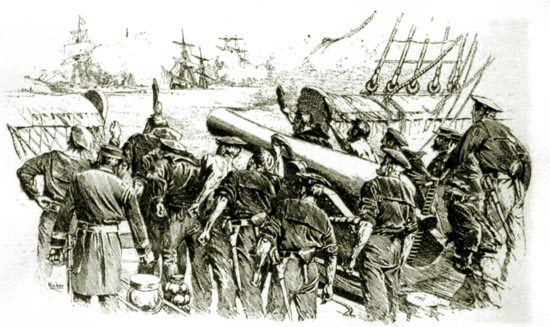
United States Steam Sloop Wyoming in the battle of Shimonoseki Straits, 1863.
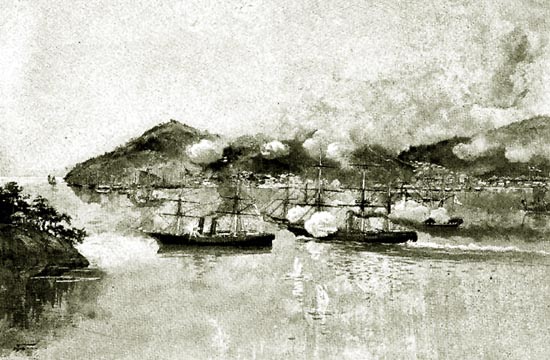
The battle of Shimonoseki Straits, 1863.
In 1873, under the command of William B. Cushing,
the Wyoming was dispatched with another ship to Sandiego de Cuba as a result of the capture of the American flag
sidewheel steamer Virginius by the Spanish cruiser Tornado off Jamaica and the execution
of its captain, Joseph Fry and 53 of the crew and passengers, eight of whom were
Amerian citizens.
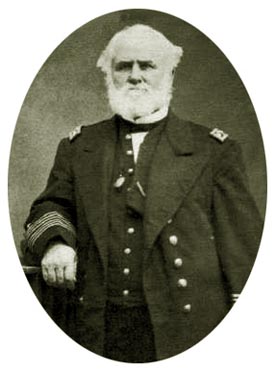 . . 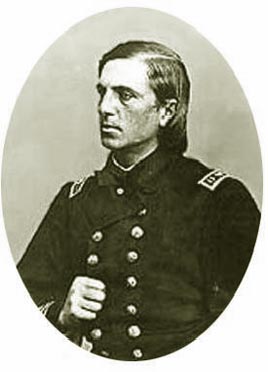
Left, David S. McDougal, Right, William B. Cushing
The appearance of the Wyoming resulted in the release of the remaining 51 sailors and the return of
the Virginius to its owners. The Virginius Affair resulted in realization of the necessity of
upgrading the Navy and distrust of the Spanish in Cuba which, in turn, had an impact 25 years
later on public perception of blame for the sinking the the Maine. It was later discovered
that, in fact, the Virginius was owned by Cubans and was not entitled to American flag status.
On 30 October 1882 the Wyoming was decommissioned. On 9 May 1892 she was sold.
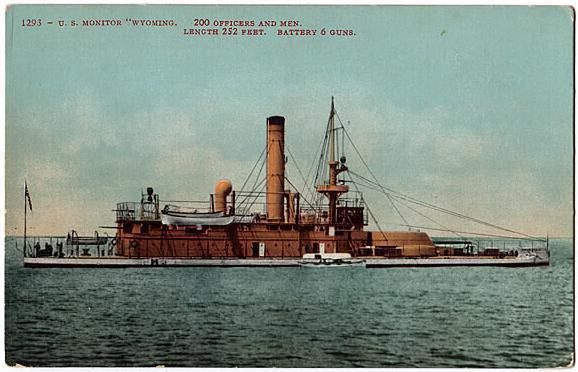
The United States Monitor Wyoming
The second USS Wyoming was the
United States Monitor Wyoming, authorized in 1898 and
launched in 1900 at the Union Iron Works in San Francisco. Her sponsor
was Miss Hattie Warren, daughter of Wyoming U.S. Senator Francis E. Warren. In 1908 she
became the first U.S. ship to be converted from coal to oil. The front turret was added
approximately the same year. Her name was
changed to the USS Cheyenne on 1 January 1909, in order to permit a third vessel to be named
the USS Wyoming. In 1913, she was refitted as a submarine tender. The Cheyenne was decommissioned in 1920, recommissioned and
decommissioned for the final time on 1 June 1926, struck from the Navy list on
25 Jan 1937 and sold for scrap on 20 April 1939.
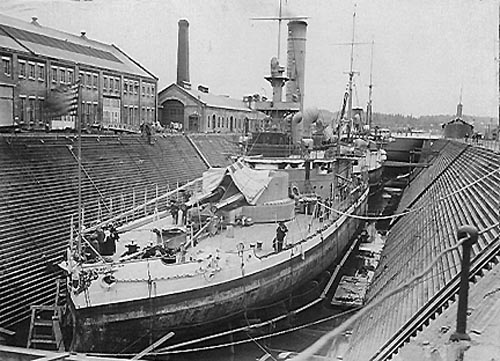
USS Cheyenne,
formerly, the Wyoming in drydock.
Note front turret which was added about 1908.
Music this Page:
ETERNAL FATHER, STRONG TO SAVE
(The Hymn of the United State Navy
and
The Royal Navy and other Navies of the Commonwealth)
Eternal Father, strong to save,
Whose arm hath bound the restless wave,
Who bidd'st the mighty ocean deep
Its own appointed limits keep;
Oh, hear us when we cry to Thee,
For those in peril on the sea!
O Christ! Whose voice the water heard
And hushed their raging at Thy word,
Who walked'st on the foaming deep,
And calm amidst its rage didst sleep;
Oh, hear us when we cry to Thee,
For those in peril on the sea!
Most Holy Spirit! Who didst brood
Upon the chaos dark and rude,
And bid its angry turmult cease,
And give, for wild confusion, peace;
Oh, hear us when we cry to Thee,
For those in peril on the sea!
O Trinity of love and power!
Our brethren shield in danger's hour;
From rock and tempest, fire and foe,
Protect them wheresoe'er they go;
Thus evermore shall rise to Thee
Glad hymns of praise from land and sea.
|
Next page: The United States Superdreadnaught Wyoming .
|